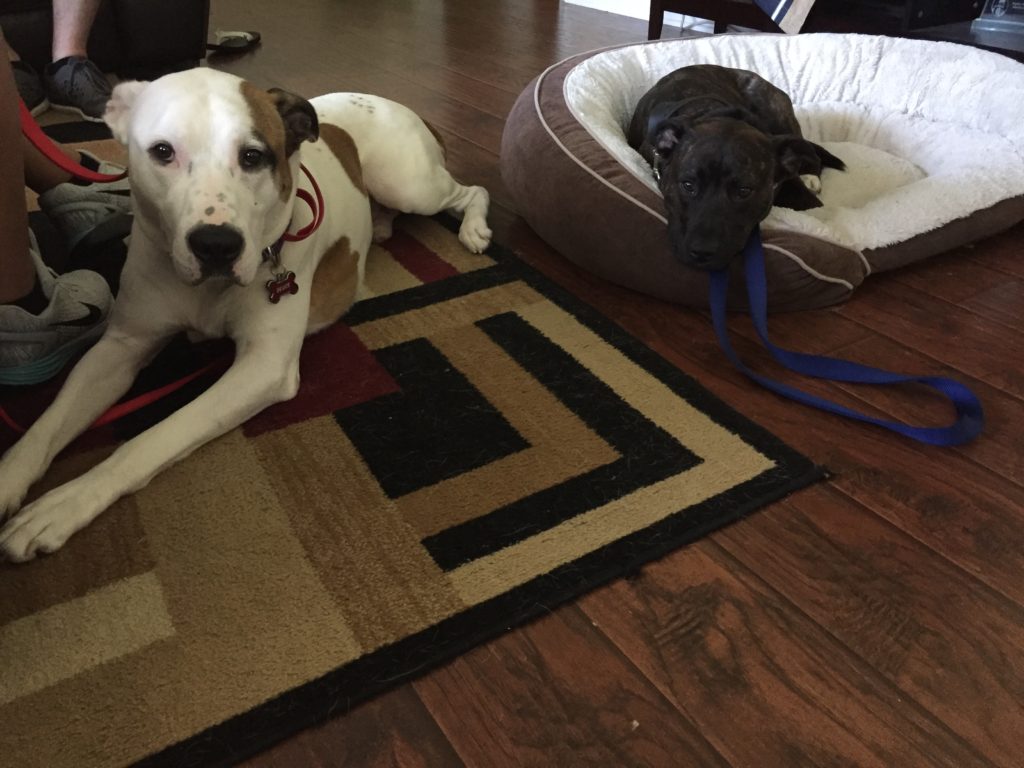
One of the biggest problems we find that owners who struggle with their dogs have is; a dog who is inattentive, reactionary, and impulsive. They have a dog who sees, hears, smells something and instantly reacts. Usually they ignore all commands, and blow off the owner to do what they desire. A dog who if they want to do something, they simply do without giving zero thought of the outcome. A dog who is in fear, hides. One who dislikes someone or another dog, growls and/or attacks. Wants something, takes. Wants to run, goes. Etc. etc.
When training basic commands with your dog, it is important to challenge them as they are learning. They will only learn that they need to listen (and sometimes it’s for their own safety) all the time, if you teach them to do so. It shouldn’t matter where you are or what they are doing, i.e. at the park or on a hike, they should always have one eye and ear on their owner. By training them that commands are non-negotiable, you can override different fears, impulses, and aggression. What we teach in every session with every client are the three D’s of proofing a command. Think of proofing a command like bomb proofing. That NO Matter what is happening they need to listen. The three D’s of proofing commands in training are distance, duration, and distractions. We teach the same thing to dogs who are fearful, who are reactive, who are bratty, who are aggressive. But how they affect them is different.
Distance equals confidence: One of the first questions we ask dog owners is “does he/she follow you everywhere around the house”. Dogs that exhibit anxious/fearful behaviors or are dealing with separation anxiety are the usual culprits of this behavior of following their owners everywhere. Creating distance with training our furry companions, they learn to handle being on their own and don’t need to lean on us for emotional support in order to feel at ease. For the bratty or aggressive dogs, they learn whether my owner is next to me or far away they still need to listen. The more comfortable they feel away from their owner, the more confidence they have to stand on their own four paws.
Duration equals calmness: Duration is the amount of time a dog has to stay in the command. When you are training duration, you are teaching your dog to relax and calm down. How? Think of duration as meditation. Meditation usually involves us sitting or lying down for a period of time. It would be rather difficult to meditate if you were pacing a room. So training your dog to lay on a bed and to stay there will help them learn to relax. Some dogs have a natural ability to just hang out for long periods, even as puppies. While others have an inability to sit still for more than five seconds, but truthfully all dogs have the ability to learn how to calm down for a long period. After practice they start to allow themselves to relax through duration work and they learn that they do not always have to be going 100 miles an hour all the time. This learned calmness allows you to teach your dog an on and off switch therefore they can have their fun but when it is time to relax, they can return to a state of calmness. Which is extremely helpful for the hyper guys who constantly need to be on the go.
Distraction equals impulse control: Distraction is one of the biggest challenges for most dogs. Have you ever seen the video of the dog, where the owner has stacked numerous treats on the dog’s snout? This dog has amazing impulse control. This pup’s ability to sit still and not give into the temptation of eating all the cookies is amazing. While training this specifically isn’t completely necessary, but what I’m talking about is helping your dog learn to control their urge to react to every sound, or sniff every bush, investigate every person walking by the window. Training them that no matter what is happening, they need to control their urge to investigate when they are in command. That no matter what is going on they need to control their urge to all the distractions in the world.